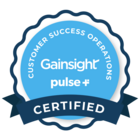In the rapidly evolving world of customer success, the synergy between sales and customer success teams is more critical than ever. One of the most impactful ways customer success can contribute to sales growth is through Customer Success Qualified Leads (CSQLs). Here, we’ll explore what CSQLs are, why they’re important, how they work, and the benefits they bring to both teams.
What is a CSQL?
A Customer Success Qualified Lead (CSQL) is a lead identified by the Customer Success (CS) team as a potential opportunity for expanding revenue, whether through upsells, cross-sells, or renewals. Unlike traditional leads sourced by marketing or sales, a CSQL is driven by the CS team’s direct interactions with customers, their understanding of customer needs, and their ongoing relationship management.
Why are CSQLs Important?
CSQLs are crucial because the CS team is in a prime position to spot growth opportunities within existing customer accounts. By leveraging their in-depth knowledge of customer satisfaction, product usage, and business objectives, CS teams can identify when a customer is ready for additional services, features, or higher-tier products. This insight turns customer success into a revenue-driving function, aligning it closely with sales.
How Does a CSQL Work?
The process typically begins with the CS team monitoring key customer metrics, like product adoption, usage patterns, or NPS (Net Promoter Score). When these metrics signal potential upsell or cross-sell opportunities, the CS team qualifies the lead based on its likelihood to convert into revenue. The lead is then passed on to the sales team for follow-up and closing.
Some organizations may automate this process by integrating their CS and CRM tools, allowing both teams to collaborate seamlessly and track the progression of CSQLs through the sales pipeline.
Key Benefits of CSQL:
CSQLs offer a range of benefits that help both customer success and sales teams drive growth and build stronger customer relationships:
1. Better Lead Quality
CSQLs are often higher-quality leads because they are sourced directly from customer success teams who have a deep understanding of the customer’s current needs and potential future requirements. As a result, these leads tend to have a higher conversion rate than cold leads generated by marketing.
2. Shorter Sales Cycles
Since the CS team has already built a trusted relationship with the customer and qualified the lead based on real-time data, the sales cycle for CSQLs is generally shorter. Customers already understand the value of the product and are more open to additional solutions, making it easier for sales teams to close deals.
3. Alignment Between Sales and Customer Success
The CSQL process fosters better collaboration between sales and customer success teams. By working together on revenue opportunities, both teams are more aligned in their goals, ensuring a smoother handoff and higher likelihood of customer satisfaction.
4. Increased Upsell and Cross-sell Opportunities
CSQLs are particularly effective at driving upsell and cross-sell opportunities. Customer success teams have the unique ability to identify these opportunities by understanding the customer’s journey, their pain points, and how additional products or services can solve them.
5. Reduced Customer Churn
When customer success and sales work together on CSQLs, there is a stronger focus on customer outcomes. By consistently delivering value through the right product recommendations, companies can reduce the risk of churn, while also increasing customer lifetime value (CLTV).
Key Takeaways: CSQLs represent a powerful bridge between customer success and sales, enabling both teams to contribute meaningfully to growth and retention. By leveraging customer insights from the CS team, sales teams can unlock new revenue streams while deepening their customer relationships. The future of sales pipelines lies not only in attracting new customers but also in maximizing the potential of existing ones—and that’s exactly what CSQLs are designed to do.
